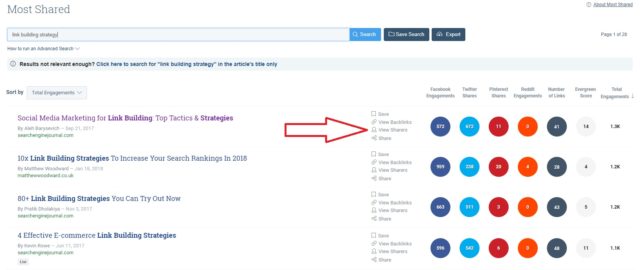
Despite speculation over the years, guest blogging isn’t dead.
Ever since Google’s Matt Cutts shunned the link-building strategy back in 2014 as a “clear violation of Google’s quality guidelines“, many marketers were left wondering whether guest blogging was worth it.
Four years later, and arguably the tactic has never been more valuable for brands trying to improve their presence online.
The bottom line is: if you want to establish your brand as experts in your industry, improve your rankings on search engines and increase traffic and leads – you need to incorporate guest blogging into your SEO and link building strategy!
In this article, we’ll discuss five successful types of guest blogs identified from all links generated by the earned media team from February to April 2018.
What is guest blogging?
Put simply: Guest blogging is a tactic used by marketers to share and promote their expertise on external online platforms.
Often this involves the promotion of original content (or re-purposed content) created with the primary intention of educating and adding value to your target customer audience.
For example, here is a guest post contribution Hallam placed on Social Media Examiner:

In this example, we re-purposed our original blog exclusively for Social Media Examiner – which is always best practice to avoid content duplication.
What are the benefits of guest blogging for SEO?
Whilst contributing your brand’s expertise to external publications present clear PR benefits such as increased online exposure and brand awareness (in some cases, a single guest post even led to over 36,000 new email subscribers and two new business leads!) the main reason guest blogging and SEO go hand in hand boils down to one important thing: links.
Google named links amongst their top three search ranking signals and countless studies have explored the correlation between a high domain authority and a high-quality backlink profile (take Moz’s “MozTrust” metric for example).
Practised effectively, contributing guest posts on authoritative websites offer a strong opportunity to build a high quality backlink profile for your website, which in turn can have a positive effect on your search engine rankings.
Case study: what types of guest blogs get links?
Now that we’ve dived into what guest blogging is and the potential SEO benefits it presents, it’s now important you understand the types of guest blogging content that generate links in order to start devising content to contribute on external websites of your own.
It’s important to note that guest blogging is just one way to build links and creating great blogs ultimately depends on the quality of your content. The following points are secondary and serve as a guideline to optimise your guest posts for outreach success!
The magic 8 number

We found that guest blog titles with exactly 8 words (equivalent to 40-60 characters) increased average link acquisition by a staggering 110%. (See Figure 1.)
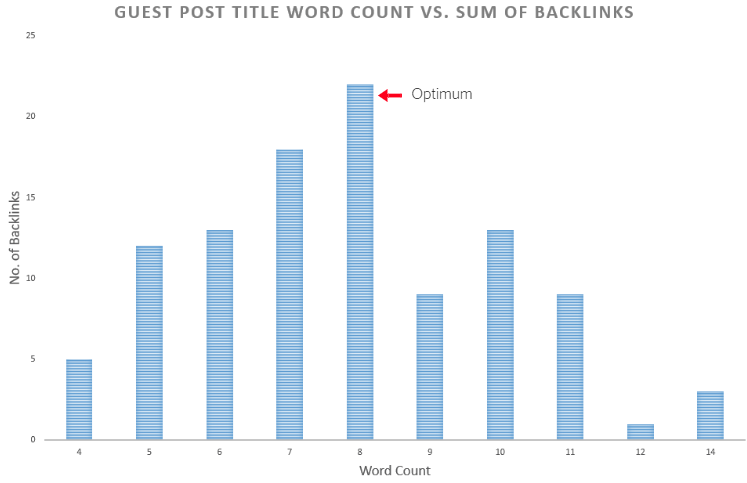
Additionally, we found that 8 and 9 worded titles increased average maximum domain rating acquisition by 17%. (See Figure 2.)
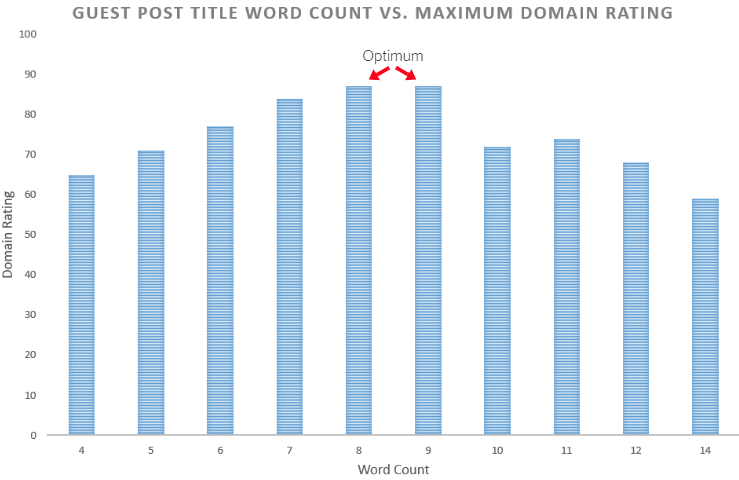
In other words, 8 proved to be the optimum guest blog title word count for generating high-quality links. This comes as no surprise considering Google typically displays the first 50-60 characters of an SEO title tag and the ideal length for engagement on a Facebook post is 40 characters.
If you want to optimise your guest blog’s linkability, it’s worth keeping in mind this handy word count rule when devising your own content ideas. Here are some examples of 8-worded guest blogs titles we found achieved the most links:
- How To Make Your Work Site More Sustainable
- Energy Saving in Schools Requires a Positive Attitude
- Getting Your Link Profile on Point in 2018
The guide
We found that how-to style guides increased average guest blog link acquisition by 40%.

A how-to guide is arguably the archetype of all blog types. Think about it, when is the last time you searched for an answer to a question on Google?
Whether it be learning how to improve productivity at work or how to use snapchat, it’s in our human nature to find answers to our problems.
In order to shape your guest blogging strategy to include more how-to style content, we’d recommend you follow this process:
1. Insert your content keyword focus into answerthepublic.com: a free tool which essentially mimics Google’s autocompleting search bar – built up by millions of predicted searches.
For example, Hallam would input “social media” or “digital marketing”

2. Download the CSV and identify a topic your brand would be able to offer expert advice on.
Here’s a topic we’ve identified that Hallam would be able to answer as we offer social media marketing as a service.

3. Scope the current top ranking articles by entering the chosen topic into Google.


4. Read them and identify any improvements.
Ask yourself, are the current guides outdated? Do you have a better example to support a specific point? What additional insight could your brand offer that would add value to your target audience?
5. Take all these key findings and get writing!
Whilst there are many different ways to devise guest blogging ideas, this is just one process we follow to generate how-to style content. If your content is even more useful and informative than current ranking articles, chances are – highly authoritative websites will want to publish it!
The realist
We found that blogs written about current issues increased average link acquisition by 85%.

One of the main factors that define the success of a PR story is its timeliness.
The same way the media loses interest in past events, news about the future can seem fluffy and unreliable unless based on factual evidence.
For example, a “Guide to Successful Email Marketing in 2018” will likely only be receptive for guest post placements between 2017/18.
Take the same blog and title it “Definitive Guide to Successful Email Marketing” and you’ve got yourself an evergreen post that can be referred to for years, and consistently updated too!
Referring to figure 3, we also found that current news increased social shares by 64%.
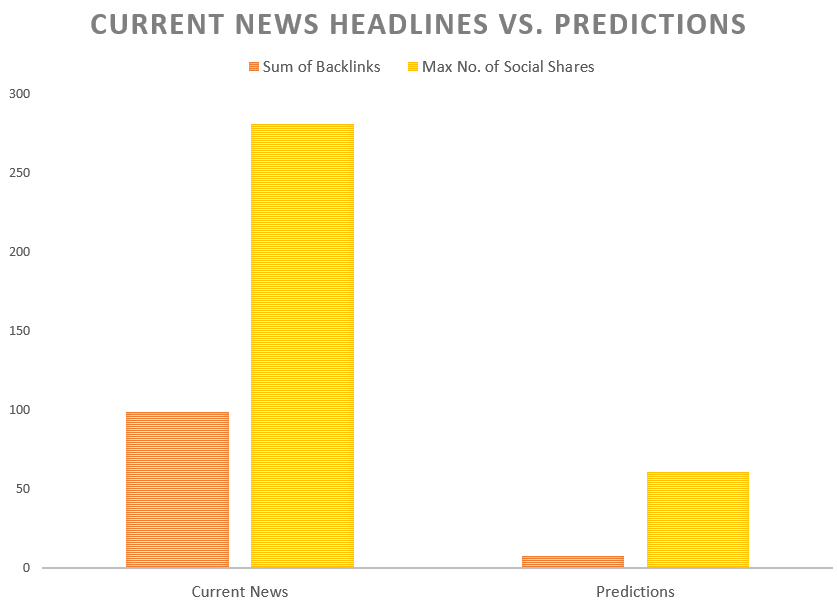
In order to create evergreen pieces of guest post content, here are a few examples we wrote in the present tense that achieved the most links and social shares:
- How To Protect Your Building Against Fire
- 4 SEO Survival Tips for the Voice Search Revolution
- What is Google My Business? And why you should use it!
The thought leader
We found that thought leadership style articles increased average link acquisition by 9%.
Defined as “an individual or firm that is recognized as an authority in a specialised field”, the term “thought leader” is often thrown around when it comes to content creation and brand marketing.
It seems obvious but you shouldn’t specifically aim to write ‘thought-leadership articles’.
Rather, you should focus on writing useful content which will in turn position your brand as a thought-leader.
Out of all the guest blogs we placed in 2018, 36% were written in a thought-leadership style – which we defined as a blog that quite simply: offered a new angle or answer to a question.
Here are three thought-leadership style article examples we placed on websites with high domain ratings:
- Why Businesses Cannot Ignore Customer Personas
- Carillion and Their Key Message Miscalculation
- Which Google Shopping Campaign Structure Strategy Works Best?
The math nerd
Although contradictory to the title of this very blog, we found that blogs that did not include a number in the title increased average link acquisition by 51%. (See Figure 4.)
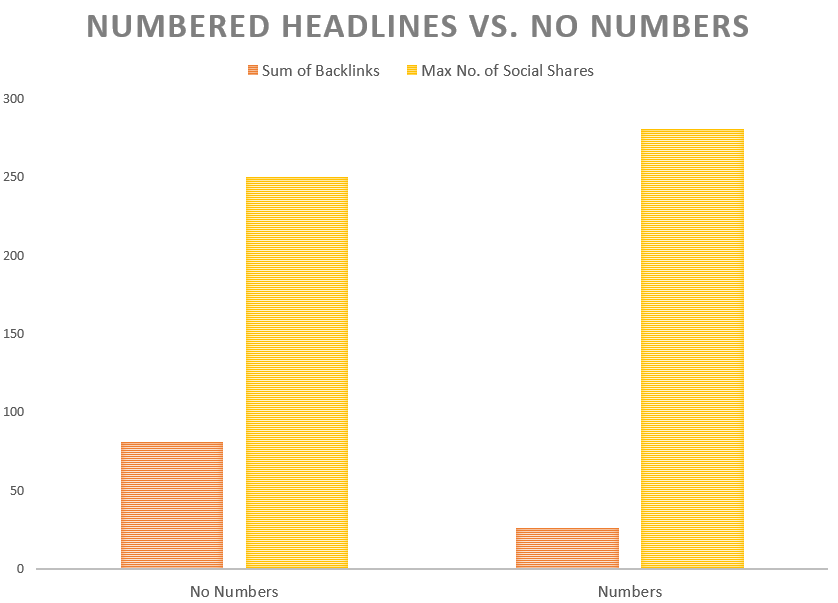
We’ve all come across a ‘listicle’ style blog at least once, and there are many studies that suggest the ultimate number to use in your blog headline to increase traffic and shares.
Whilst listicle guides may work well for social shares and for on-site blogging content, guest blogs with numbered headlines can limit outreach potential.
For example, one news publishing website may prefer a “10 reasons to build a construction brand” guide, whilst another website might prefer a more concise “5-ways to” guide based on content titles they’ve previously published.
The point is: Quantity isn’t always quality, and you should always prioritise building quality content over filling up numbers to fit a “10 ways to” headline.
Here are some examples of our best-performing guest blogs that get straight to the point:
- How to Keep Your Office Costs Under Control
- Putting the Eco in E-commerce
- Using Facebook Ads to Promote Content
Over to you
We hope you’ve learned something useful to take away from this study.
To recap, here are 5 things you should incorporate into your guest blogging strategy:
- Aim for guest blog titles with 8 words
- Aim to inform and educate your audience with how-to style articles
- Be timely: write in the present tense and about current events
- Position your brand as thought leaders: offer unique answers to questions
- Focus on building quality content over filling up numbers on a “10 ways to” guide
If you’d like to learn how to successfully create and outreach your guest blogs, please get in touch with our Digital PR team.
What type of guest blogs works well for your SEO strategy or business niche? Let us know in the comments below!

